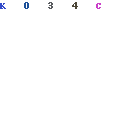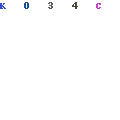Key Takeaway:
- Using fly ash in concrete mixes results in increased strength and durability, as well as a reduction in carbon emissions. This makes it an environmentally friendly and cost-effective alternative to traditional concrete mixes.
- Fly ash also enhances the workability, pumpability, and finishing of concrete, making it easier to work with and resulting in a smoother finish.
- When using fly ash in concrete mixes, it is important to consider the type and quality of the fly ash, the dosage and mixing process, as well as any associated environmental and health concerns, to ensure the best results.
Are you looking to increase the strength of your concrete mix? Fly ash can be a great solution! It not only strengthens concrete, but also offers a range of other benefits. Read on to find out how.
Benefits of Using Fly Ash in Concrete Mixes
Fly ash is a valuable component that can be added to concrete mixes to enhance its overall quality. This material is a byproduct of coal-fired power plants and is an affordable substitute for Portland cement. Using fly ash in concrete mixes has numerous advantages that include increased strength, durability, and workability.
Here are three key benefits of including fly ash in concrete mixes:
- Improved strength and durability: When fly ash is added to concrete mixes, it reacts with lime to form additional cementitious compounds. These compounds increase the overall strength and durability of the concrete, reducing permeability and the risk of cracking and spalling.
- Reduced environmental impact: By diverting fly ash from landfills, the use of this material in concrete mixes reduces environmental pollution. Additionally, producing Portland cement requires significant amounts of energy and can generate a large amount of greenhouse gases, while fly ash is a more sustainable alternative.
- Greater workability: Fly ash particles are significantly smaller than cement particles, which makes them easier to mix with other materials. This results in a more fluid concrete mix that can be easier to pour and shape, reducing labor costs and improving the overall finish of the product.
It is important to note that fly ash composition can vary widely depending on the coal source and power plant processes used. Therefore, it is essential to test the fly ash before using it in concrete mixes to ensure that it meets the necessary quality standards.
To fully benefit from using fly ash in concrete mixes, it is crucial to use the right mix of materials and follow proper testing and curing processes. Adjusting the proportions of fly ash, cement, and other aggregates in the mix can help optimize concrete performance. Additionally, proper curing and sealing can improve the strength and durability of the finished product.
Overall, using fly ash in concrete mixes is an excellent way to reduce environmental impact while simultaneously improving concrete quality. By understanding the benefits and best practices, construction professionals can produce more cost-effective, sustainable products that meet the specific needs of their projects.

Image credits: pearidgeconcrete.com by Harry Duncun
Factors to Consider When Using Fly Ash in Concrete Mixes
Using Fly Ash in Concrete Mixes requires consideration of various aspects. These include the type of fly ash, its chemical composition, and properties such as fineness and bulk density. Moreover, it is essential to assess the impact of fly ash on the fresh and hardened properties of concrete. The use of high-quality fly ash can improve workability, durability, and strength.
In Table 1, the critical aspects to consider when using Fly Ash in Concrete Mixes are highlighted. These include the type of fly ash, its chemical composition, and physical properties such as Fineness and Bulk density. The table also includes the recommended dosage of fly ash and its effects on the properties of fresh and hardened concrete.
It is essential to consider the storage and handling of fly ash to avoid contamination and ensure consistency in concrete production. It is also crucial to use quality control measures to ensure that the fly ash meets the required chemical and physical specifications.
While using Ground Granulated Blast Furnace Slag (GGBFS) in concrete mixes allows for improved strength and durability, it is essential to understand the differences between GGBFS and fly ash. GGBFS requires higher curing times and may affect the setting time of concrete. Therefore, it is necessary to adjust the mix design appropriately.
In a recent project, a construction firm utilized fly ash in concrete mixes, resulting in improved workability and strength. The use of quality fly ash reduced the need for additional cement, resulting in cost savings and improved sustainability.
Overall, the use of fly ash in concrete mixes offers significant advantages. However, careful consideration of the type, quality, and dosage of fly ash is necessary to ensure optimal results.
Five Facts About the Benefits of Using Fly Ash in Concrete Mixes:
- ✅ Fly ash is a byproduct of burning pulverized coal in electric power generating plants, and it can replace a portion of the Portland cement used in concrete mixes. (Source: American Concrete Institute)
- ✅ The use of fly ash reduces the amount of cement needed in concrete mixes, which in turn reduces carbon emissions and greenhouse gas emissions from cement production. (Source: National Ready Mixed Concrete Association)
- ✅ Fly ash improves the workability, durability, and strength of concrete mixes, making them more resistant to cracking, abrasion, and chemical attack. (Source: Portland Cement Association)
- ✅ The use of fly ash in concrete mixes is a cost-effective solution that can lead to significant savings for construction projects. (Source: Federal Highway Administration)
- ✅ The beneficial properties of fly ash in concrete have been recognized by various countries, and it has been used extensively in construction projects worldwide. (Source: World Coal Association)
FAQs about The Benefits Of Using Fly Ash In Concrete Mixes
What are the benefits of using fly ash in concrete mixes?
The benefits of using fly ash is a by-product of coal combustion that can be used as a partial replacement for cement in concrete mixes. Using fly ash in concrete mixes offers several benefits, including increased strength, reduced permeability, and improved durability.
How does fly ash improve the strength of concrete?
Fly ash contains reactive silica and alumina, which when combined with calcium hydroxide in cement, produces additional calcium silicate hydrate (C-S-H) gel. This additional gel enhances the overall density and strength of the concrete.
Can fly ash be used in all types of concrete mix designs?
Yes, fly ash can be used in all types of concrete mix designs. However, the percentage of fly ash used should not exceed 35% of the total cementitious materials in the mix and adjustments to the mix design may be necessary.
Does using fly ash in concrete affect its permeability?
Yes, the use of fly ash in concrete can reduce its permeability. This is because fly ash particles have a finer particle size compared to cement particles, leading to a more tightly packed material that reduces the pore size and increases density.
What is the impact of using fly ash in concrete on the environment?
The impact of using of fly ash in concrete reduces the carbon footprint of the construction industry by reducing the demand for cement, which is a major contributor to greenhouse gas emissions. Additionally, fly ash is a waste product that is diverted from landfills and put to beneficial use.
How can I ensure the quality of fly ash used in my concrete mix?
It is important to source fly ash from a reliable supplier who conducts quality control tests to ensure that the fly ash meets the necessary specifications for use in concrete. Testing should include fineness, chemical composition, and reactivity.
The post The Benefits Of Using Fly Ash In Concrete Mixes appeared first on Staging.
source https://pearidgeconcrete.com/concrete-mix-design/the-benefits-of-using-fly-ash-in-concrete-mixes/

No comments:
Post a Comment